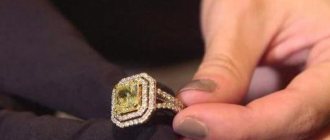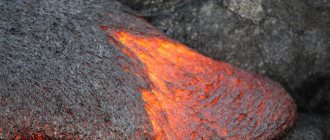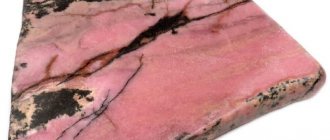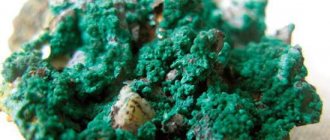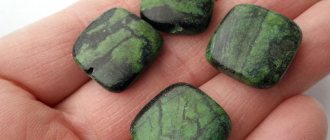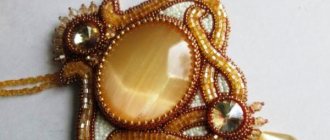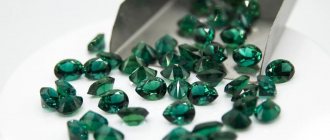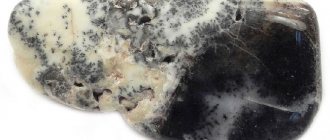How are gemstones formed?
Minerals are formed in many different environmental conditions within the Earth. Most gemstones form in the Earth's crust, the top layer of the planet between 3 and 25 miles deep.
Only two types of gemstones, diamond and peridot, form in the Earth's mantle, which represents 80% of the Earth's volume. The mantle is mainly composed of molten rock called magma, with a solid top layer
Although few gemstones are initially formed in the mantle, all gems are mined in the earth's crust. The crust is made up of three types of rocks, known in geology as volcanic, metamorphic and sedimentary. These technical terms refer to the way rocks are formed. Some gemstones are particularly associated with one type of rock, while others are associated with several types of rock.
The volcanic process involves the solidification of magma. Magma from the mantle can rise to the crust, usually through volcanic pipes. If it reaches the surface of the earth, it hardens in the form of lava. However, if the igneous mass cools slowly in the crust, it can crystallize and form minerals
Increasing pressure can also cause this pegmatoid fluid to penetrate into surrounding rocks, often undergoing a chemical exchange with them. The long list of gemstones formed from volcanic rock includes the chrysoberyl group, all quartz (including amethyst, citrine and ametrine), beryl (emerald, morganite and aquamarine), garnets, moonstone, apatite, diamond, spinel, tanzanite, tourmaline , topaz and zircon.
When volcanic rock reaches the earth's surface, the forces of erosion and weathering cause it to break into smaller particles that accumulate on the surface or are moved by wind and water. Over time, layers of such sediments form on the ground or under water.
Pressure from the upper layers causes compaction in the lower layers along with various chemical and physical changes such as fossilization, which results in the creation of sedimentary rock.
Evaporation is another process that produces sediment, as when dripping mineral-rich waters form stalactites or stalagmites. Gemstones associated with sedimentary rock include jasper, malachite, opal and zircon.
The presence of intrusive magma in a given zone (known as contact metamorphism) or interactions of larger scale tectonic plates (known as regional metamorphism) exposes volcanic and sedimentary rocks and minerals to heat or pressure, which can cause changes in their chemical and crystalline structures.
The result is the creation of metamorphic rock. Gemstones associated with the metamorphic rock include beryl, jade, lapis lazuli, turquoise, spinel, ruby, sapphire and zircon.
Rocks and minerals are in a constant process of change called the geological cycle. Volcanic rock can change into sedimentary or metamorphic rock. Sedimentary rock can become metamorphic or igneous rock.
And metamorphic rock can become volcanic or sedimentary, but for this you have to be patient.
Mineralogy and geology
Geology is a science that studies the Earth's lithosphere: its composition, structure, history. The main object of study of geology is rocks.
Geology includes many sciences: geophysics, geochemistry, mineralogy, tectonics.
Knowledge from the field of geology began to accumulate in ancient times; the formation of geology as an independent scientific discipline occurred in the 17th century.
Mineralogy is a science that studies minerals. Mineralogy studies the appearance, geometry, physical and chemical properties of minerals. This science also studies the conditions under which minerals are formed.
Mineralogy is part of the group of geological sciences, but it itself is much older than geology. Even in ancient times, people were already interested in minerals. Minerals were studied by Aristotle, Theophrastus, and Pliny the Elder.
The healing properties of gems: myth or reality
It has long been believed that rocks have the ability to relieve diseases, bring money and good luck, and attract love. There is interesting evidence that stones have magical properties.
And now minerals are correlated with the signs of the Zodiac, I recommend choosing “your” stone.
Useful information on how to choose and wear stones correctly
Those born in spring can choose such precious stones as: green diamond, sapphire, emerald, amethyst, peridot and pink topaz.
People born in summer need strong protection, which will be provided by aquamarine, ruby, emerald, garnet, zircon, pink topaz and chrysoberyl.
Those born in autumn can opt for topaz, garnet, sapphire, adamantium and peridot.
A person born in winter most often has an unyielding and firm character, but sometimes personal success is not enough for such people. Amulets and talismans made of crystal, diamond, turquoise, quartz, sapphire and moonstone can combat this problem.
Two weeks after purchasing the stone, the mineral is not used for its intended purpose, but it is worth communicating with it: praising, stroking and talking.
You cannot wear or use cracked gem jewelry that has been damaged by mechanical impact. If it is amber with a natural defect, then it is permissible to use it.
The natural power of gems
The enchanting beauty of minerals has attracted people since ancient times. People revered precious stones, classifying them as symbols of immortality. History knows of cases when stones saved the lives of their owners, warning them of danger by changing their own shade.
Even today, many believe in the magical power of stones. A clear confirmation of this is the interesting fact that minerals are actively used as talismans and amulets. Here are just a few examples:
- Aventurine is considered a symbol of happiness and love. A stone of pink, brown or green shade helps in unleashing creative abilities.
- Ruby is a leadership stone that can provide its owner with additional energy.
- Turquoise is a stone of victory and good luck, which has the ability to suppress feelings of irritation and anger in people.
- Malachite is an ideal amulet for children, protecting against dangers and diseases.
- Lapis lazuli is a stone of the sky, making its owner peaceful and kind.
Treatment with stones is not without meaning. An excellent confirmation of this is the quartz lamp. The quartz glass installed inside it freely transmits the infrared part of the light, which not only effectively disinfects indoor air, but also helps in the treatment of human diseases. Directed rays accelerate the recovery processes of the skin, relieve inflammation in the joints, and restore the functioning of the respiratory tract.
Nature has given people wonderful material. Our task is to gratefully accept this generous gift and learn to use it wisely for good.
5 / 5 ( 1 voice )
Legends and myths of different nations about stones
The Indian lapidaries say about the stones that this is the blood that was shed by the fabulous king Asura during the fight against the monster. When this blood spilled to the bottom of the river, rubies appeared. When blood hit the sand near the Ganges River, grenades appeared. When the gall of the defeated king was placed in the desert area near the sea, the emerald was born. If we talk about pearls, then these are the tears of the sea for dead heroes.
According to Hindus, the souls of the dead inhabited not only animals and people, but also some types of stones, especially gems. There the souls stayed until complete purification, which was the beneficial effect of the stone on the “owner”.
Ancient peoples believed that pearls came from the morning dew, which was formed by the tears of the goddesses of love. It was said about malachite that it allows you to make everyone invisible, and if you have to drink from a malachite container, you will be able to understand the language of living beings.
Diamonds
Diamond is the hardest substance on the planet. Therefore, a diamond can only be polished or sawed using another diamond.
Black diamonds are much more common in nature than light-colored diamonds and are used in the manufacture of sandpaper.
Scientists have learned to create artificial diamonds; they are as hard as real ones. They produce not only industrial diamonds, but also jewelry ones.
The technology for making artificial diamonds is complex - carbon is heated to high temperatures under high pressure.
In Russia, the largest diamond deposits are located in the Republic of Sakha (Yakutia).
